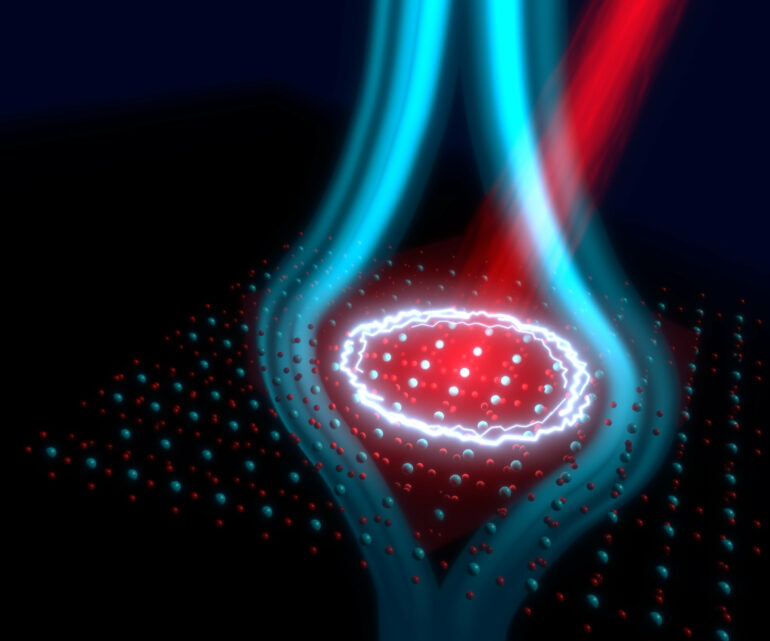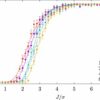Superconductivity is a fascinating phenomenon, which allows a material to sustain an electrical current without any loss. This collective quantum behavior of matter only appears in certain conductors at temperatures far below ambient.
A number of modern studies have investigated this behavior in so-called non-equilibrium states, that is in situations in which the material is pushed away from thermal equilibrium. In these conditions, it appears that at least some of the features of superconductivity can be recreated even at ambient temperatures.
Such non-equilibrium high temperature superconductivity, shown to exist under irradiation with a laser pulse, may be useful for applications different from the ones envisaged for the stationary version of superconductivity, as for example in high-speed devices controlled by laser pulses.
This phenomenon has been termed “light-induced superconductivity,” signaling an analogy with its equilibrium counterpart.
An important frontier in the past decade has been to characterize the properties of one such light-induced superconducting state and understand how far this phase reproduces the known properties of a conventional superconductor.
Besides being capable of transporting electrical currents without loss, superconductors are also known to expel magnetic fields from their interior.
This phenomenon, known in equilibrium conditions as the Meissner effect, is a direct consequence of the mutual coherence of the charge carriers and of their tendency to march in lockstep. However, measuring the expulsion of magnetic fields for light-induced superconductivity has been challenging, because the effect only persists for a few picoseconds (one trillionth of a second), making it impossible to measure magnetic field changes with precision.
A team of researchers at the Max Planck Institute for the Structure and Dynamics of Matter (MPSD) in Hamburg, Germany, led by Andrea Cavalleri, has developed a new experiment capable of monitoring the magnetic properties of superconductors at very fast speeds.
They have worked on laser-irradiated YBa2Cu3O6+x, a compound for which static superconductivity is only seen down to about −200 degrees Celsius. “We have discovered that photo-excited YBa2Cu3O6.48, in addition to featuring near zero resistance, also expels a static magnetic field from its interior,” says Sebastian Fava, author of the article published in Nature.
This experiment was made possible by placing a spectator crystal in close vicinity of the sample under investigation and using it to measure the local magnetic field strength. The crystal reflects changes in the magnetic field into changes in the polarization state of a femtosecond laser pulse.
“Due to the short duration of the probe pulse, we can reconstruct the time evolution of the magnetic field surrounding the YBa2Cu3O6.48 sample with sub-picosecond resolution and unprecedented sensitivity,” says Giovanni de Vecchi, one of the co-authors.
“The photo-induced magnetic field expulsion we observed is comparable in size to the one measured when YBa2Cu3O6+x is made superconducting at equilibrium by cooling,” adds fellow author Michele Buzzi.
“This suggests that driving the material may even be an effective route to bring its superconducting properties closer to ambient conditions,” continues co-author Gregor Jotzu, now a faculty member at EPFL and head of the Dynamic Quantum Materials Laboratory.
As a consensus on the microscopic origin of light-induced superconductivity in YBa2Cu3O6.48 is still missing, these results are an important benchmark for current theories.
In YBa2Cu3O6+x, the superconducting order does not completely disappear above the equilibrium superconducting transition temperature and some local fluctuating superconducting order remains, somewhat similar to a disordered state.
These discoveries suggest that photo-excitation of YBa2Cu3O6+x with tailored light pulses can be used to synchronize this fluctuating state and restore the superconducting order at temperatures much higher than the ones at which the material becomes superconducting at equilibrium, all the way to room temperature.
More information:
S. Fava et al, Magnetic field expulsion in optically driven YBa2Cu3O6.48, Nature (2024). DOI: 10.1038/s41586-024-07635-2
Provided by
Max Planck Society
Citation:
New experiment investigates light-induced Meissner effect in optically driven superconductor (2024, July 11)



